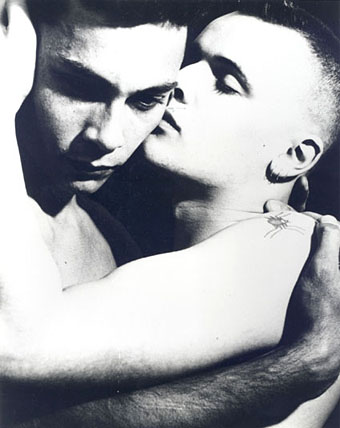The Angelic Conversation, 1985.
An unseen woman recites Shakespeare’s sonnets—fourteen in all—as a man wordlessly seeks his heart’s desire. The photography is stop-motion, the music is ethereal, the scenery is often elemental: boulders and smaller rocks, the sea, smoke or fog, and a garden. The man is on an odyssey following his love. But he must first, as the sonnet says, know what conscience is. So, before he can be united with his love, he must purify himself. He does so, bathing a tattooed figure (an angel, perhaps) and humbling himself in front of this being. He also prepares himself with water and through his journey and his meditations. Finally, he is united with his fair friend.


I stumbled on this entry looking for images from the film. I found an old Jarman book’ “At Your Own Risk” gathering dust and flixked through. It brought back so many memories of the 80s & early 90s especially the horrendous AIDS press & politics of the time.
I first saw Angelic Convesation on Channel 4 not long after it’s launch. I started to remember just how groundbreaking the homoerotic imagery seemed at the time. With the poetry and romanticism, I was in a revery. It seemed like a beautiful, impossible dream to me, a student in the provinces. I moved to London and a few years later, I met one of the performers, Philip, the boy with the spider tattoo. We sometimes went out clubbing together and I met Mr Jarman. I was in awe and could scarcely speak. I think his influence on film, video and visual arts has been quite underestimated.
Thanks for the comment, that’s really good to hear. I never met him unfortunately but I did have some sporadic communication with Coil over the years, the musicians who provided the soundtrack for Angelic Conversation and some of Blue.
I still have a video tape of that first TV screening of Angelic Conversation. I think the film of his that made the biggest impression on me was Sebastiane since the first TV broadcast of that was pretty unprecedented for its nudity and homoerotic content. Oh, and another memorable thing… I had to make a video copy of Caravaggio for Rudolf Nureyev to watch. Some friends were working as dressers for the Northern Ballet when he was touring with them in the late Eighties. Rudy missed the film and asked if anyone could get him a tape of it. Never heard whether he liked it or not.